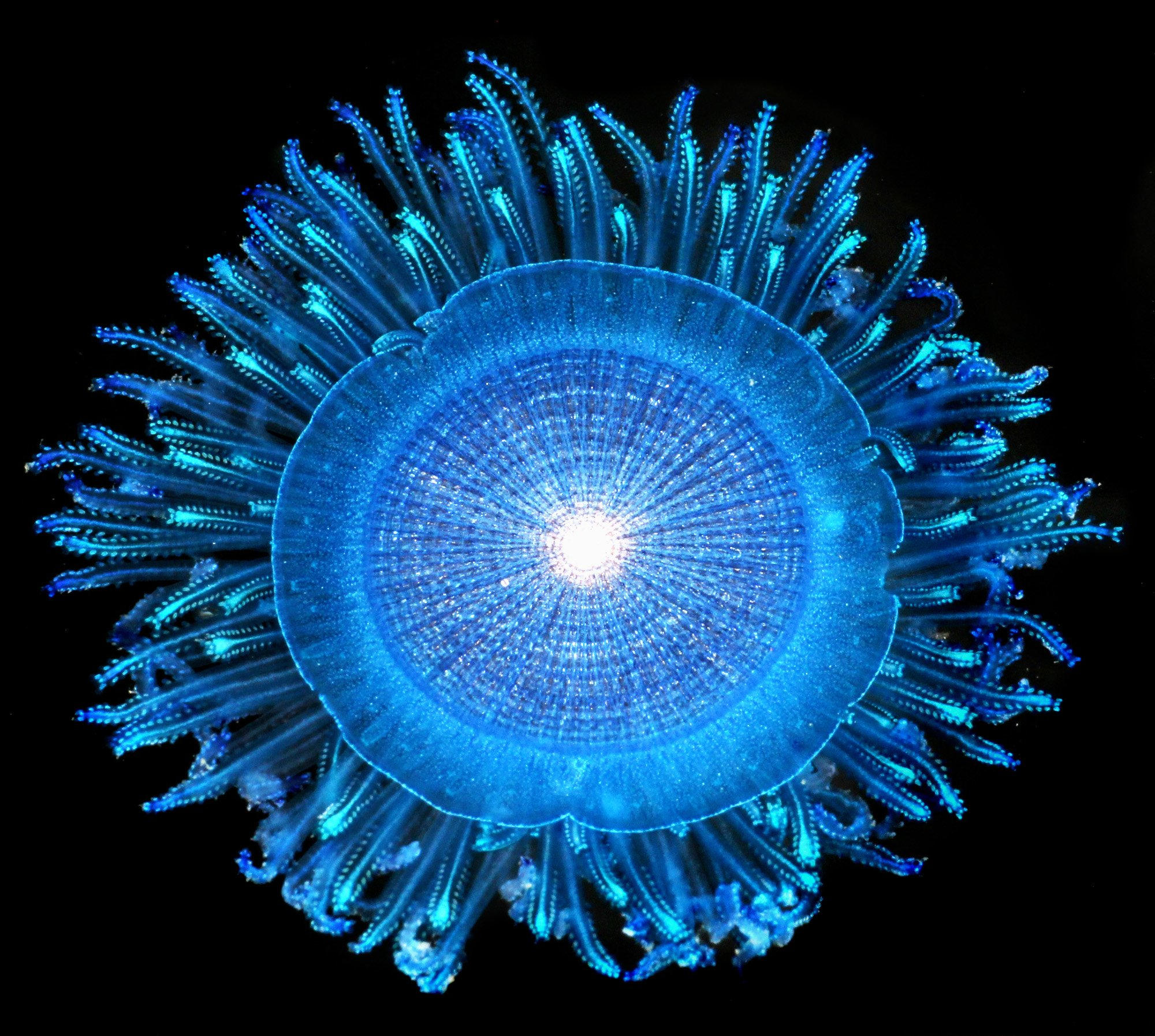
Blue jellies, known by their scientific name porbita, float on the surface of the ocean with a circular disk, and drift where the current takes them. Credit: Dennis Rick, Global Surface Ocean Ecosystem Alliance (GO-SEA) Field Guide (CC-BY 4.0, https://creativecommons.org/licenses/by/4.0/)
A new study by citizen scientists reveals the prevalence of marine life in the “garbage patch” of the North Pacific Ocean.
The “garbage patch” in the North Pacific is not only notorious for accumulating plastic debris but also serves as home to many marine creatures.[{” attribute=””>species such as jellyfish, snails, barnacles, and crustaceans, according to a study conducted by Rebecca Helm and her team at Georgetown University, US. Their findings were recently published in the journal PLOS Biology.
There exist five major oceanic gyres — areas where numerous ocean currents converge — with the North Pacific Subtropical Gyre (NPSG) being the largest. This region, commonly referred to as the North Pacific “Garbage Patch”, is characterized by a high concentration of plastic waste due to the convergence of ocean currents. However, a variety of floating marine species, including jellyfish (cnidarians), snails, barnacles, and crustaceans, may also take advantage of these currents to navigate the open seas, though their precise habitats remain largely unknown.

Velella. These blue jellies, known as by-the-wind sailors, drift with the wind using a special living sail. Credit: Denis Riek, The Global Ocean Surface Ecosystem Alliance (GO-SEA) Field Guide (CC-BY 4.0)
The researchers took advantage of an 80-day long-distance swim through the NPSG in 2019 to investigate these floating lifeforms, by asking the sailing crew accompanying the expedition to collect samples of surface sea creatures and plastic waste. The expedition’s route was planned using computer simulations of ocean surface currents to predict areas with high concentrations of marine debris.
The team collected daily samples of floating life and waste in the eastern NPSG and found that sea creatures were more abundant inside the NPSG than on the periphery. The occurrence of plastic waste was positively correlated with the abundance of three groups of floating sea creatures: sea rafts (Velella sp), blue sea buttons (Porpita sp), and violet sea snails (Janthina sp).

The violet snails Janthina construct floating bubble rafts by dipping their body into the air and trapping one bubble at a time, which they then wrap in mucus and stick to their float. Credit: Denis Riek, The Global Ocean Surface Ecosystem Alliance (GO-SEA) Field Guide (CC-BY 4.0)
The same ocean currents that concentrate plastic waste at oceanic gyres may be vital to the life cycles of floating marine organisms, by bringing them together to feed and mate, the authors say. However, human activities could negatively impact these high-sea meeting grounds and the wildlife that depends on them.
Helm adds, “The ‘garbage patch’ is more than just a garbage patch. It is an ecosystem, not because of the plastic, but in spite of it.”
Reference: “High concentrations of floating neustonic life in the plastic-rich North Pacific Garbage Patch” by Fiona Chong, Matthew Spencer, Nikolai Maximenko, Jan Hafner, Andrew C. McWhirter and Rebecca R. Helm, 4 May 2023, PLOS Biology.
DOI: 10.1371/journal.pbio.3001646




More Stories
Boeing May Not Be Able to Operate Starliner Before Space Station Is Destroyed
Prehistoric sea cow eaten by crocodile and shark, fossils say
UNC student to become youngest woman to cross space on Blue Origin